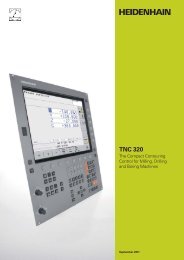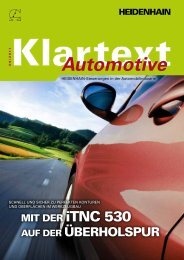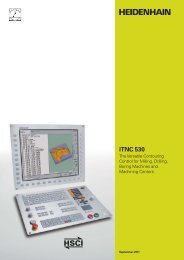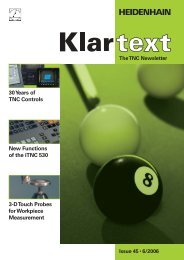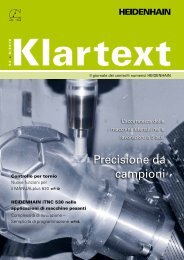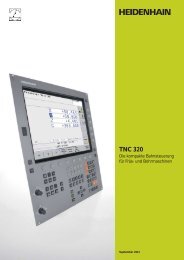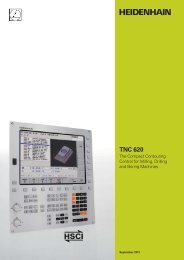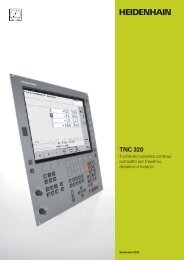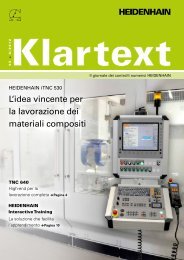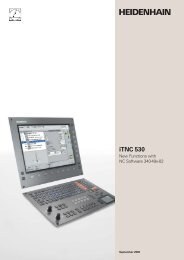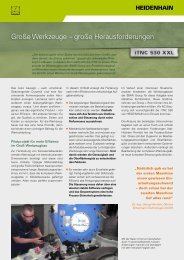Klartext 47 - TNC 640 - Heidenhain
Klartext 47 - TNC 640 - Heidenhain
Klartext 47 - TNC 640 - Heidenhain
Create successful ePaper yourself
Turn your PDF publications into a flip-book with our unique Google optimized e-Paper software.
New Innovative Functions<br />
for the i<strong>TNC</strong> 530<br />
Dynamic Collision Monitoring<br />
The NC software 340 49x-04 for the<br />
i<strong>TNC</strong> 530 includes a series of new<br />
functions for machine manufacturers<br />
and users. These functions make<br />
it even easier to work with the control,<br />
and they also make operation<br />
of the machine more safe.<br />
Dynamic Collision Monitoring<br />
(DCM)<br />
Dynamic Collison Monitoring (DCM)<br />
helps prevent damage to the machine<br />
and workpieces. Although NC<br />
programs created from CAD/CAM<br />
systems avoid collisions between<br />
the tool and workpiece, the machine<br />
components in the work envelope<br />
are not taken into consideration.<br />
This is where HEIDENHAIN comes<br />
into play, and makes the work envelope<br />
defined by the machine manufacturer<br />
visible to the control. The operator<br />
can see machine components<br />
in danger of collision on the screen,<br />
and then move them out of the collision<br />
area. The adaptable settings for<br />
the split screen layout are new. For<br />
example, the program blocks can be<br />
displayed in one window, and the<br />
work envelope in the other window.<br />
If a collision is imminent, the control<br />
interrupts the automated machining.<br />
Adaptive Feed Control<br />
DXF Converter<br />
KinematicsOpt<br />
KinematicsDesign<br />
Adaptive Feed Control (AFC)<br />
Adaptive Feed Control (AFC) optimizes<br />
the contouring feed rate depending on<br />
the performance of the tool spindle and<br />
other process data.<br />
The dynamic line diagram in the status<br />
window is new. It shows how the<br />
contouring feed rate and spindle performance<br />
relate to another.<br />
During the learning<br />
phase, the <strong>TNC</strong> shows<br />
the currently saved<br />
reference power in<br />
a pop-up window. If<br />
required, you can use<br />
a soft key to reset the<br />
reference power measured<br />
up to that point<br />
and restart the learning<br />
process.



